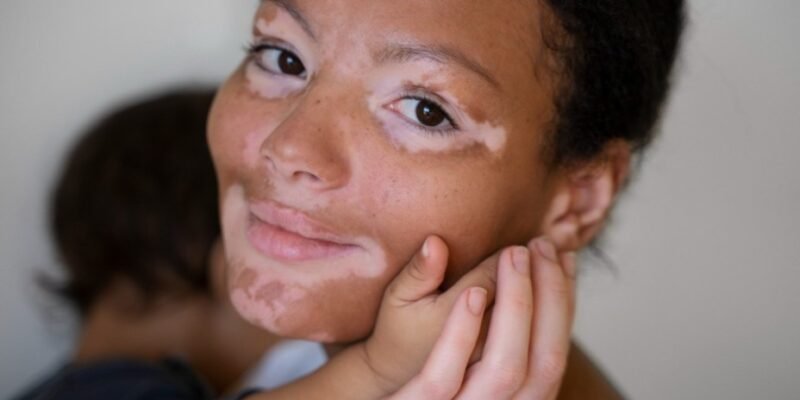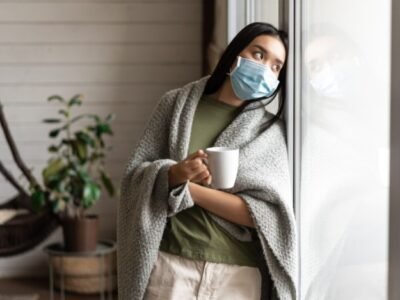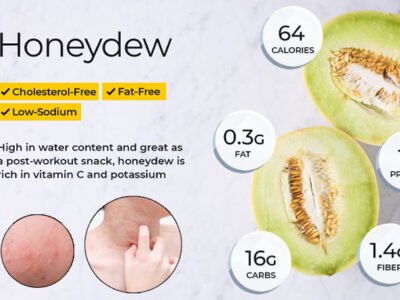
Mary, a 28-year old black woman, had been suffering from severe abdominal pain for over a week. Despite multiple visits to the emergency room, doctors kept dismissing her symptoms as menstrual cramps or acid reflux. It was only when Mary’s white roommate accompanied her to the hospital that they took her complaints seriously. After conducting tests, doctors discovered Mary had appendicitis and needed immediate surgery. While recovering, Mary couldn’t help but wonder if the delay in properly diagnosing her condition had anything to do with the color of her skin.
Sadly, Mary’s experience is far from unique. A growing body of research indicates that people of color, especially those with darker skin tones, face shocking disparities across every measure of health and healthcare. This phenomenon, known as colorism, remains one of the most overlooked yet deeply destructive forms of prejudice worldwide. In this four-part docuseries, we will peel back the layers to expose how colorism scars our bodies, warps our minds, fractures our communities, and threatens our futures. Only by bringing these unseen wounds to light can we begin the necessary work of healing.
Define Colorism
While often conflated with racism, colorism refers specifically to discrimination based on skin tone, even among people of the same racial or ethnic group. Sociologists define colorism as the preferential treatment of those with lighter complexions while subjecting those with darker hues to prejudice and mistreatment. Unlike racism, colorism operates on a spectrum, with proximity to whiteness determining social status and access to resources.
Historical Context
The roots of colorism can be traced back to European colonialism across Africa, Asia, and the Americas. Seeking to exploit indigenous populations, colonists developed complex color-coded caste systems, elevating light-skinned natives to positions of authority. Centuries of systemic oppression programmed people to internalize the dominant narrative that lighter skin is intrinsically more valuable.
Slavery further entrenched colorism, as enslavers granted house slaves with fairer complexions more privileges than those consigned to the fields. America’s infamous “one-drop rule” condemned anyone with the slightest African ancestry to the bottom of the racial hierarchy.
Though slavery ended long ago, its sinister legacy persists through colorism. Even as societies grow more diverse on the surface, this hidden bias continues to lurk below, influencing how we are perceived and treated.
The Docuseries
In this groundbreaking docuseries, director Ava DuVernay explores how colorism profoundly shapes every aspect of life for people of color. Through searing personal narratives and insights from scholars spanning fields from medicine to psychology, DuVernay lays bare the countless ways colorism impacts health. From negotiating prejudices in the doctor’s office to managing expectations at home, each episode examines how this discrimination damages bodies, minds, families, and communities.
Ultimately, this series issues an urgent call to action. Only by reckoning with the traumatic burdens of our past and present can we build a society where your health and dignity are never determined by the color of your skin.
Thesis Statement
This article argues that colorism has far-reaching yet often invisible effects on the physical and mental health of people with darker skin tones within communities of color. As the “Skin Deep” docuseres illustrates, colorism manifests through implicit bias in healthcare, cultural beauty standards, intergenerational trauma, and other avenues to create tremendous health disparities. By exploring the diverse health consequences of colorism and highlighting potential solutions, we hope to spur collective action towards health equity and racial justice.
The Body Politic
In this episode, DuVernay presents alarming evidence of how colorism distorts medical care for millions. From pain management to reproductive health, darker skinned people of color report experiencing discrimination across every interaction with the healthcare system. Many describe feeling “unseen” by providers who dismiss or misdiagnose their symptoms. Others recall being denied necessary medications and interventions due to racial profiling disguised as medical judgments. As communities of color contend with alarming health disparities, including significantly elevated rates of infant mortality, maternal complications, chronic disease, and now COVID-19, colorism colors who receives access to life-saving treatment.
Examples
Melanie, a dark-skinned Latina woman, struggled for years to conceive. When she asked her doctors about fertility treatments, they discouraged her, emphasizing the costs and difficulties. However, her lighter skinned sister-in-law was actively encouraged by those same physicians to pursue IVF, despite having similar fertility issues as Melanie.
Marcus, a young dark-skinned black man, suffered recurring stomach pain for months before a doctor agreed to run tests. They discovered Marcus had a severe case of ulcerative colitis that had progressed dangerously unchecked. Meanwhile, his light-skinned college roommate received an endoscopy after just a few weeks of similar symptoms.
Ana, an indigenous woman from Guatemala, gave birth at a clinic that prohibited her from speaking her native Mayan language. She received no translation services during 16 hours of grueling labor, exacerbating the stress and trauma.
These examples illustrate the potentially fatal consequences when discrimination dictates who gets access to essential care.
Expert Voices
According to Dr. Beverly Tatum, professor of psychology at Spelman College, “When you go to a doctor and they don’t listen to your story, when they doubt what you’re saying is real, that is a dehumanizing experience with real health impacts.”
Dr. Rhea Boyd, pediatrician and public health advocate, emphasizes that “colorism begins damaging health in the earliest moments of life. We see it in lower birth weights, higher maternal complication rates, and shorter breastfeeding durations for darker skinned mothers and infants. These factors cast a long shadow, leading to disadvantages that compound over a lifetime.”
Their insights make clear that addressing colorism is essential to any progress on health equity.
Intersectionality
Colorism also intersects with other forms of oppression. Darker skinned women face “double discrimination” based on both race and gender biases, contributing to massive care disparities. Nearly half of black women who die during childbirth would have survived with proper diagnosis and treatment. Transgender people report dramatically higher denied care rates when also facing colorism. Without an intersectional approach, many affected by overlapping biases remain invisible.
Call to Action
Achieving health equity will require collective action. We must advocate for policy reforms like implicit bias training for providers, expanded language access services, diversifying medical school admissions, and legal protections against discrimination in care. But work must begin on the individual level, through educating ourselves about colorism and speaking out whenever we observe its harms. We all have a role in ensuring quality healthcare is never determined by complexion.
The Mind Under Siege
Psychological Impact
In episode 2, DuVernay spotlights the Mental Health Toll of Colorism. Internalized racism stemming from colorism leads many darker skinned people of color to feel self-hatred, shame, and undeserving of care. This toxic stress inflicts lasting psychological wounds, contributing to higher rates of low self-esteem, anxiety, depression, eating disorders, and suicide. Mental health experts emphasize that healing requires addressing not just internal psychology but also the social and structural forces inflicting trauma.
Social Stigma
The episode conveys how social stigmas surrounding skin tone infiltrate mental well-being from an early age. Young girls receive the message that their self-worth depends on approximating Eurocentric beauty ideals valuing lighter skin and straight hair. Boys learn that darker skin relegates them to assumptions of criminality and violence. Throughout life, daily microaggressions reinforce that skin tone determines your value. The cumulative impact of never feeling “good enough” in your own skin exacts deep psychological damage.
Representation Matters
DuVernay stresses that visual media and pop culture play a powerful role in perpetuating or disrupting these harmful standards. She highlights activists calling for more diverse and affirmative representations of darker skinned people across film, television, magazines, and advertising. Seeing people who look like you portrayed positively provides mirrors for self-acceptance rather than society’sFun distored projections. Recognizing beauty in its vast array of shades helps free minds from restrictive standards.
Community Healing
The episode also explores innovative mental health initiatives promoting healing and empowerment. Therapists of color specialized in racial trauma are building a new psychology of liberation. Support groups create safe spaces for people to share stories, find validation, and reclaim agency from internalized colorism. By tending to our collective emotional wounds, we can strengthen resilience and redefine health on our own terms.
Self-Care Strategies
On an individual level, self-care can help counter colorism’s psychological effects. The episode suggests helpful strategies:
- Surround yourself with affirming messages about your inherent beauty and worth.
- Limit consumption of media that fails to represent your skin tone positively.
- Challenge inner criticisms and replace colorist self-talk with words of self-love.
- Practice mindfulness to manage stress and reduce self-judgment.
- Build community with those who appreciate you for you. You deserve to feel seen.
Though colorism’s reach is systemic, we each have power to care for our mental health through conscious daily actions.
Generational Scars
Focus
Colorism casts a shadow that spans generations, shaping family dynamics and cultural values. In episode 3, DuVernay investigates how parents often unconsciously pass down internalized colorism onto children through seemingly innocuous comments and behaviors that communicate light skin as more beautiful or valuable. This social inheritance continues inflicting trauma unless actively examined and disrupted. Healing must involve open conversations and consciousness raising within communities of color.
Breaking the Cycle
Well-intentioned parents can perpetuate colorism through subtle actions, like complimenting children for having lighter skin or using skin bleaching creams. DuVernay urges consciously countering any automatic preferences for Eurocentric features. Instead, families can celebrate children equally for characteristics unrelated to appearance. They can expose kids to books and media showcasing the beauty of diverse skin tones. Avoiding loaded language about “good” versus “bad” hair reduces pressure to conform to dominant beauty standards not designed for people of color. By embracing true diversity rather than internalized ideals, parents plant the seeds for children to blossom into confident, empowered adults.
Community Conversations
Transforming cultural norms requires openness. Families and communities must create spaces to discuss colorism’s causes and consequences. Recognizing today’s biases as stemming from historical oppression shifts blame from individuals to systems. The path forward lies in building collective racial pride and solidarity. Faith leaders, educators, and cultural institutions all play essential roles in fostering understanding.
Celebrating Diversity
Some communities are spearheading this culture shift through creative action. Cultural festivals use art, music, and food to honor diverse complexions. Dark is Beautiful campaigns counter popular media’s exclusion of darker skinned models and actors. Classrooms teach the harms of colorism alongside lessons on black history and beauty. By elevating affirming narratives, communities can slowly erase the scars of past prejudice on collective self-image.
A Call for Healing
Episode 3 ends with a call for families and communities to hold courageous conversations, make amends for past wounds, and forge new ways forward together. Only by addressing the generational trauma of colorism can we build a more just and loving world.
Building a New Future
Focus
The series concludes by highlighting changemakers working to dismantle colorism in healthcare and beyond so that future generations may inherit greater equity. Episode 4 offers hope and concrete solutions to inspire collective action.
Policy Advocacy
DuVernay profiles advocacy groups pushing legislation to combat medical discrimination. They have achieved policy wins like California’s law mandating implicit bias training to address racism and colorism in maternal care. Activists continue pressing for national healthcare equity reforms, including:
- Expanded language access services in hospitals and clinics. Without translators, non-English speakers face grave risks.
- Diversifying healthcare leadership by addressing Discriminatory admissions practices that have long excluded people of color from medical schools.
- Enhanced cultural competency training for providers on avoiding biases.
- Anti-discrimination protections on both state and federal levels.
These types of systemic changes are essential to transform healthcare.
Allyship and Solidarity
But policy alone is insufficient without public pressure. DuVernay implores viewers, regardless of background, to become allies in this struggle. Racial justice groups leading the charge invite accomplices from all communities to join their activism. Diverse coalitions give these issues visibility and urgency. Healthcare equity uplifts everyone.
Personal Action
On an individual level, everyday choices help create change. We can support black-owned businesses and medical practices to grow holistic community-based care. Speaking out against colorist statements challenges biases among family and friends. Donating to organizations expanding healthcare access makes an impact. Seeing colorism’s health harms compels us to act in ways small and large.
A Message of Hope
The series concludes on a stirring note, asserting that, armed with courage and compassion, we can build a society founded on justice and the fundamental truth that every life possesses equal worth regardless of skin tone. When healthcare affirms this by serving all equally, communities can begin healing centuries-old wounds. Though the road is long, we travel it together, step by step into a brighter future for generations to come.
Conclusion
In the “Skin Tone” docuseries, director Ava DuVernay exposes the devastating yet hidden health consequences of colorism for people with darker skin tones around the globe. Episode by episode, personal narratives, expert analysis, and data reveal how implicit bias within the healthcare system leads to life-threatening treatment disparities. The psychological trauma inflicted by beauty standards and stigma surrounding skin tone inflict deep wounds. Families and communities transmit and internalize colorism across generations.
Yet the series also lights the way forward through policy reforms, activism, and personal accountability. When we confront colorism’s immense but invisible harms, we take the first step on the path to healing.
Reiterate Call to Action
We all must answer this urgent call to dismantle colorism wherever it obstructs health and dignity. Achieving equity requires action through legislation expanding access, healthcare diversity, advocacy groups empowering community activism, purposeful education to counter unconscious bias, and speaking out against discrimination when we witness it. Big or small, our efforts collectively uplift. In the face of injustice, apathy becomes complicity. Let what you have learned about colorism’s unacceptable costs propel you to take a stand for a more just future.
Leave a Lasting Impression
The next time you walk into a doctor’s office, classroom, workplace, or community space, remember that your health and humanity should never depend on the shade of your skin. We all deserve to feel seen, heard, and cared for. Though childhood stories like Mary’s seem bleak, people across generations and nations are coming together to close the chapter on colorism’s painful legacy. When we honor the intrinsic beauty within each person, we help exchange trauma for healing. From this movement, a new story emerges. So when you look in the mirror, see not color, but character. What future will you help write?













